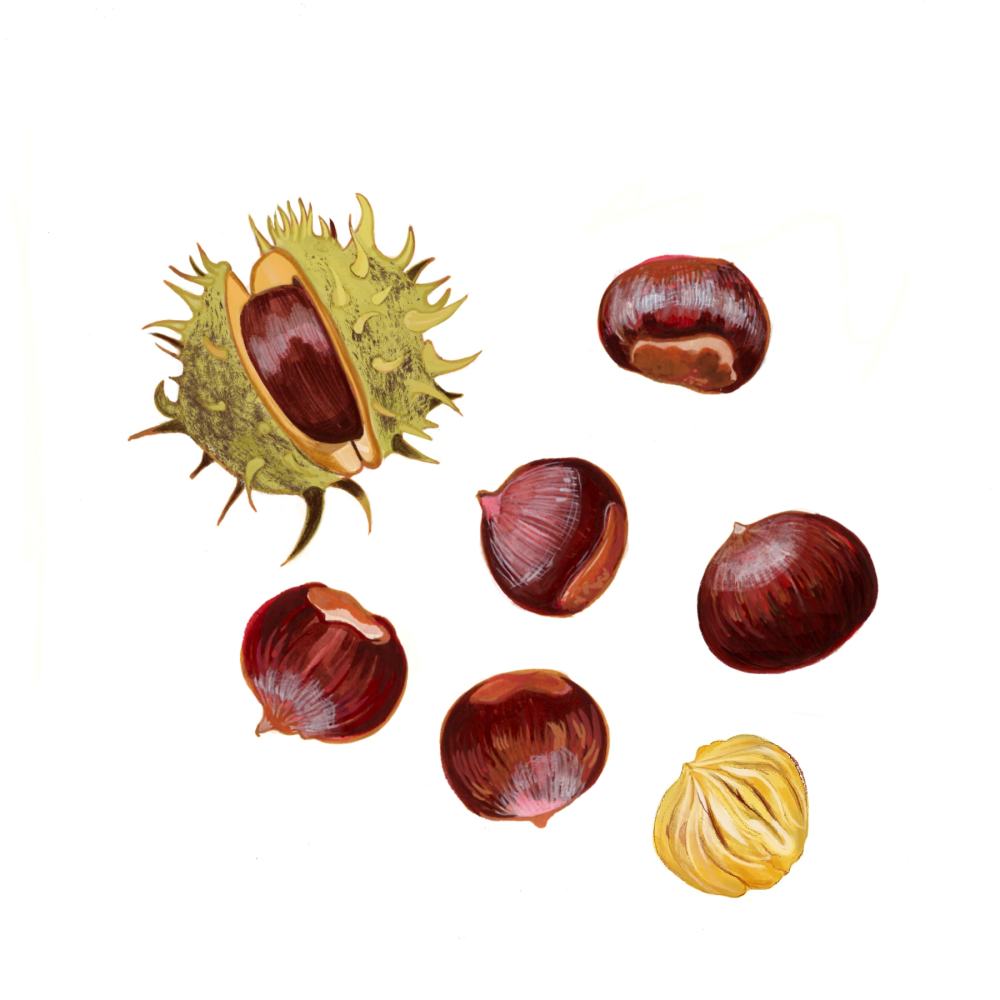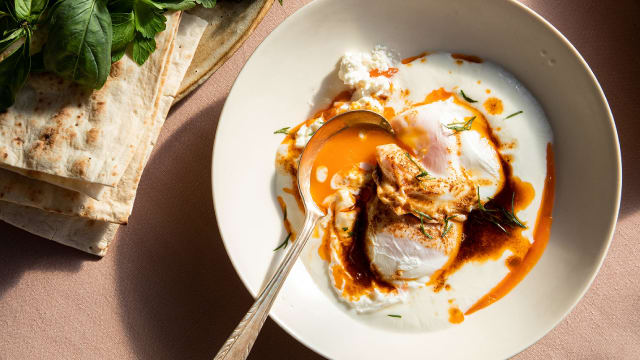Chestnut

Latin name: Castanea spp.
Other names: castagna (Italian)
Uses: nut, starch/flour
What are chestnuts?
In many parts of the world, autumn is synonymous with spiny sea urchin-like balls littering the ground, housing shiny brown chestnuts within. Not to be confused with unrelated water chestnuts or mildly poisonous horse chestnuts, chestnuts are related to maples and the similarly delicious beechnut. They can be kind of cumbersome to extract from their tough skins, but once you’ve eaten a freshly roasted chestnut, you’ll find that they’re worth the effort.
Why are chestnuts healthy?
Unlike other nuts, chestnuts are high in vitamin C. They also contain A, some Bs, and E, and an array of minerals like calcium, copper, iron, magnesium, and zinc. Their high levels of fiber and antioxidants — of particular note are gallic and ellagic acids —convey wide-ranging benefits.
What do chestnuts taste like?
Chestnuts can be eaten raw, but they’re pretty astringent. When cooked, they have a starchy texture similar to baked potato or anko bean paste, and a buttery-nutty flavor with warm, earthy sweet potato undertones.
How do I use chestnuts?
Before roasting, score a little X into the thick, leathery skin with a sharp knife to prevent the nut from exploding. Once cooked and shelled, they’re ready to add nutty, creamy sweetness to a whole world of dishes.
The Japanese dish kuri gohan (chestnut rice) is a traditional fall food, and other cuisines riff on this as well; try a chestnut risotto with caramelized shallots and a pinch of nutmeg, or an Azerbaijani shirin plov with raisins or hunks of roasted pumpkin. You can also add chestnuts to your favorite holiday dressing, which is perfect for stuffing acorn squash.
You can toss them in butter, honey, and cinnamon for a custard tart, or make a classic Italian Mont Blanc (a whipped cream-capped mountain of sweet chestnut spaghetti), but don’t overlook Korean dessert like yul-lan (cookies molded in the shape of chestnuts and dipped in pine nuts) or Japanese kuri manju (chestnut-filled sweet buns).
You can use chestnut flour to make a rustic pasta, which is divine tossed with brown butter and sage; for baking luscious pound cakes (brush with orange-zested rum syrup for best results); or any other gluten-free baking that would benefit from chestnut’s nutty-sweet flavor.
What do chestnuts pair well with?
They naturally pair well with other nuts and autumn foods, like wild mushrooms, but they also love to be sweetened with cream, honey, fennel seed, and vanilla.
Where do chestnuts grow?
For millennia, wild chestnuts were harvested in places where cereal crops struggled (specifically, the mountainous and forested regions of the Mediterranean, southwestern and eastern Asia) and were a staple food there. They’re still primarily grown China, Turkey, and South Korea, though chestnuts in American markets sometimes come from Spain (another top producer). There are many varieties found around the world.
How to buy chestnuts:
In season, look for nuts with shiny shells that are heavy for their size.
Fun chestnut fact:
Chestnuts’ association with Christmas goes back much farther than Nat King Cole’s song. In France marrons glacés (candied chestnuts) have sweetened the holiday for over 400 years; in Italy, they’re soaked in wine for festive roasting; and they’ve been standard stuffing for the English holiday bird since the Victorian era. The custom stuck around in the US, too, until the early 20th century when the American chestnut was nearly wiped out by a fungal disease from introduced Japanese chestnut trees.




